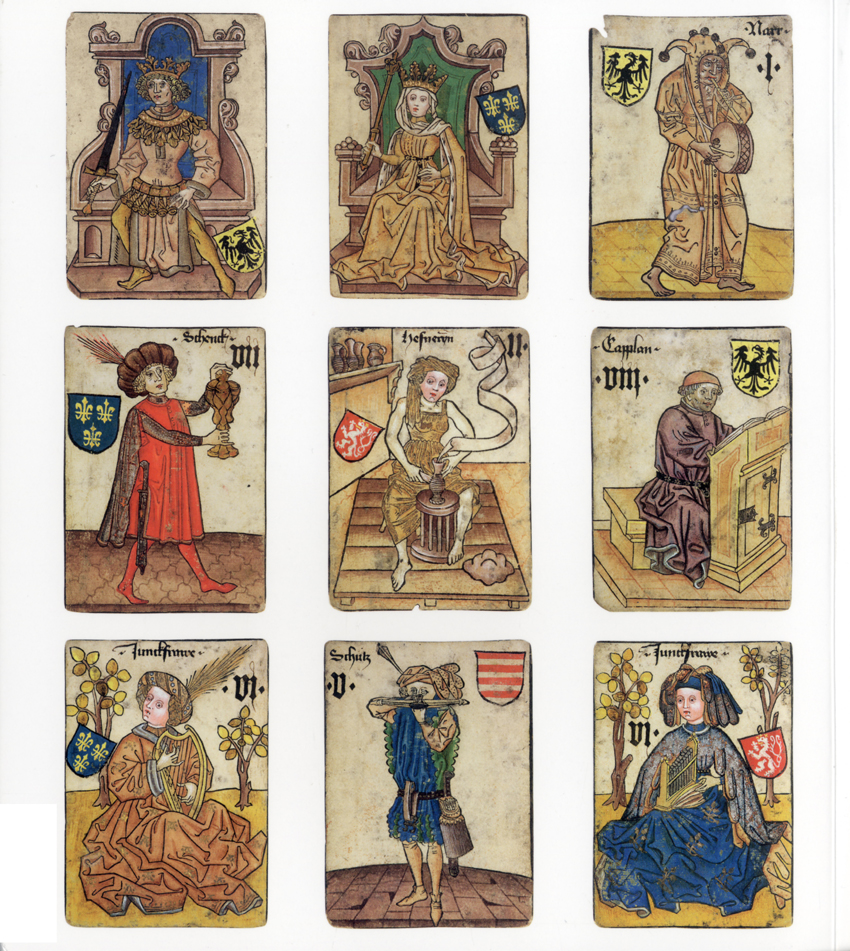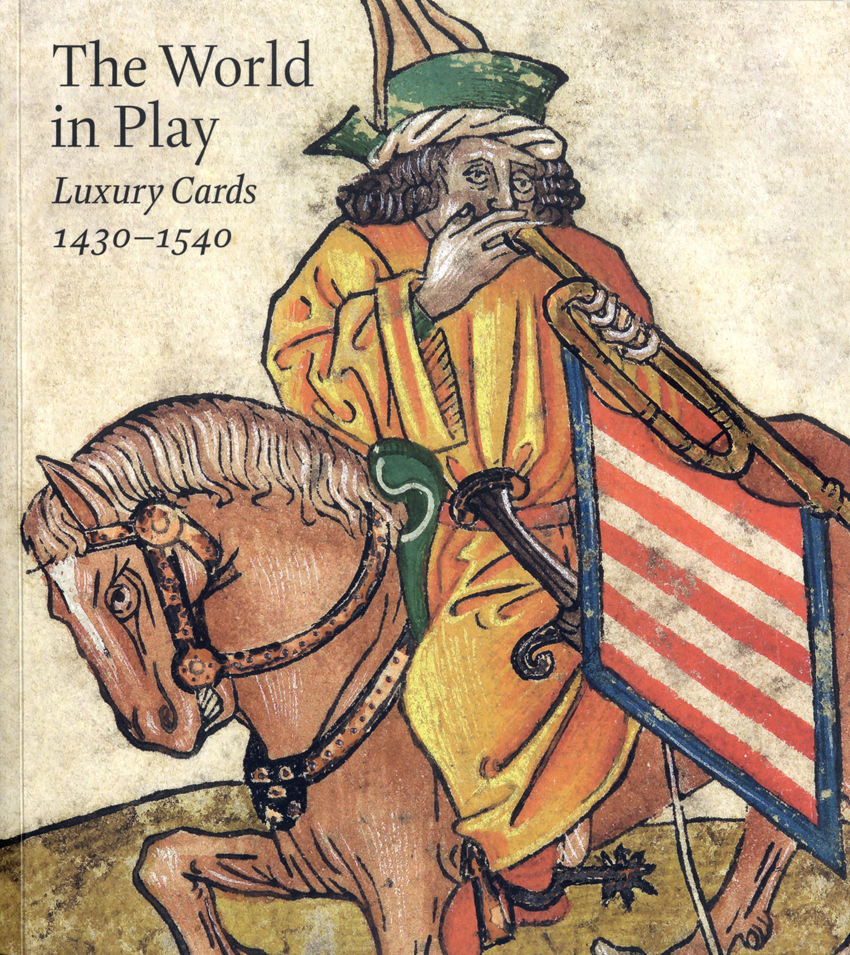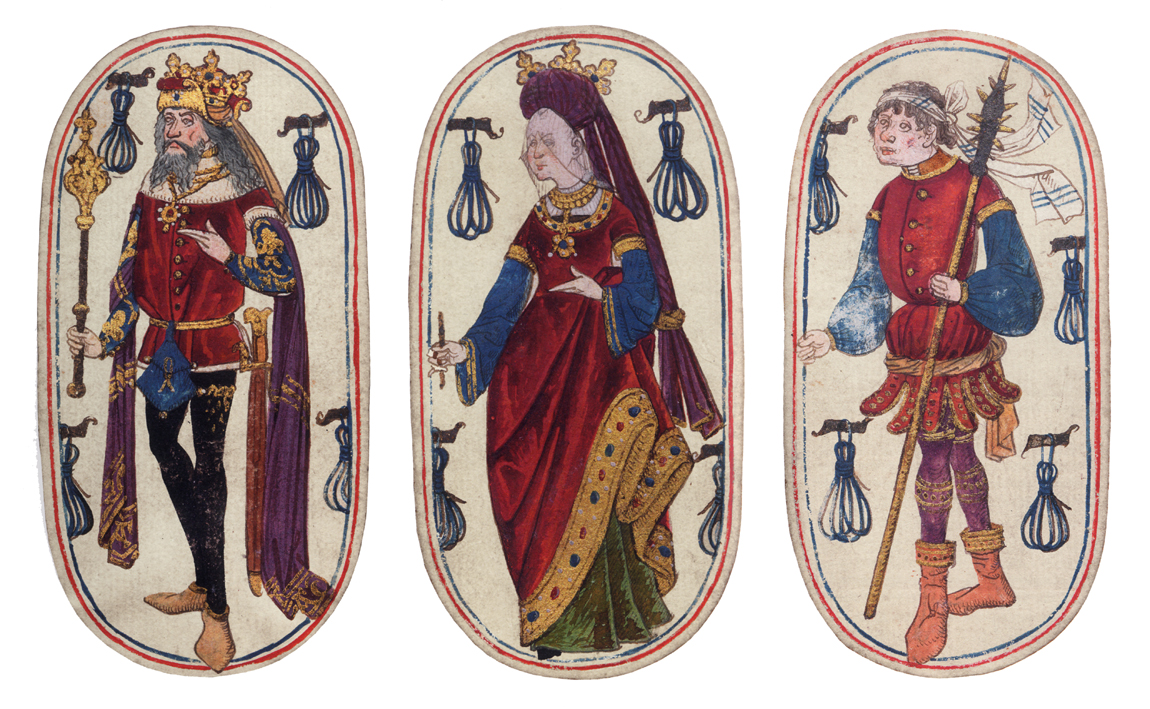An Exhibition At The Cloisters & A Book
By Anne Kugielsky
The World in Play: Luxury Cards 1430–1540 by Timothy B. Husband, The Metropolitan Museum of Art (www.metmuseum.org) New York City, and distributed by Yale University Press (www.yale.edu), New Haven, Conn.; 2016; 136 pages; softcover; $25.
As Thomas P. Campbell, director of The Metropolitan Museum of Art, says in his foreword to, The World in Play, “Playing cards are familiar to everyone, but we usually do not think of them as fine art. The[se] hand-painted luxury playing cards … were … created for princely patrons by gifted artists and workshops, they are tiny panel paintings that illustrate princely hunts, courtly figures, a diversity of fauna and flora, glorious landscapes, and casts of characters that range from high-ranking royals to the lowliest workers. … These cards tell of a world in play.”
In the Fifteenth and Sixteenth Centuries, card playing was widely enjoyed at all levels of society. However, only three decks of European hand-painted playing cards are known to have survived from the late Middle Ages. These include The Cloisters Playing Cards, which form the core of a small exhibition at The Cloisters, 99 Margaret Corbin Drive, Fort Tryon Park, in Manhattan through April 30. They are also the highlight of this engaging volume by Timothy B. Husband, curator in the department of medieval art and The Cloisters, The Metropolitan Museum of Art.
The cards on view and in this volume are unique works of art that illuminate the transition from late medieval to early modern Europe, a period of tumultuous change. Included are still-surviving luxury decks of hand-painted European playing cards, hand-colored woodblock cards, engraved cards and tarot packs (not the Nineteenth Century type for foretelling the future, but game cards), all which illustrate diverse characters ranging from royals to commoners.

Various cards from The Courtly Household Cards are: Back top row (l to r) King of Germany; Queen of France; 1 of Germany: Fool; middle row: 7 of France: Cupbearer; 2 of Bohemia: Potter; 8 of Germany: Chaplain; bottom row: 6 of France: Lady-in-Waiting; 5 of Hungary: Crossbowman; 6 of Bohemia: Lady-in-Waiting.
Examples of cards from the earliest hand painted woodblock deck as well as Fifteenth Century German engraved cards, north Italian tarot cards of the same period and the finest deck from the early Sixteenth Century complete the display and the discussion in the book. Collectively, the figures and scenes depicted on these cards reflect changing worldviews during a period of change.
With their images ranging from royals to commoners, as well as of period objects such as sheaves of wheat, bells, nooses and pails, these unique works of art reflect common life during the period. They are also miniature works of art, often created for princely patrons by Renaissance masters. Intended as collections, not to be used for play, a few decks of these cards are now in the collection of The Cloisters, The Morgan Library and Museum, and Yale’s Beinecke Rare Book and Manuscript Library, to mention only US collections.
This volume is the only study of its kind in English, and the only one in a generation in any language, focusing one of the more intriguing works of secular art from The Cloisters Collection. The narrative by Husband discusses the significance of playing cards in the secular art of the period and recounts the varied stories they tell. Colorful, often humorous, sometimes scatological, these cards provide a unique glimpse into the lives, attitudes, and customs of those who played with them or collected them.
Heavily illustrated with 197 delightful color illustrations including the entire exhibition, as well as tarot cards, hand-painted and hand-colored cards, engraved cards and delightful detail shots, all make this a visually luxurious volume. Rounding out the book are several sections including a “Chart of The Courtly Household Cards,” notes and a checklist of the exhibition, which make this a treat for the eyes and a scholarly research tool.



